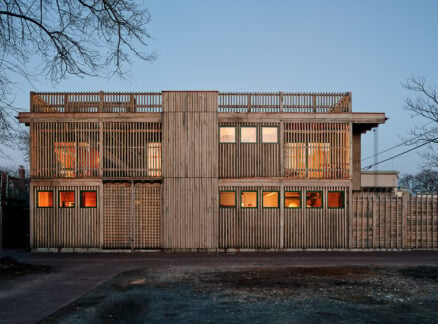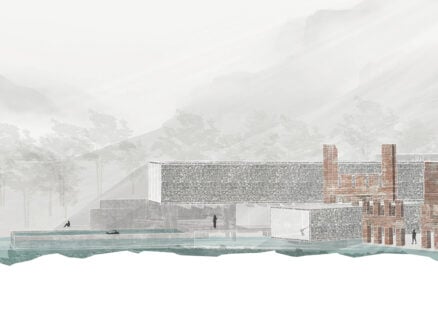
April 17, 2017
When an Urban Planning Agency Gets a Seriously Needed Redesign
For decades, the Boston Redevelopment Authority had a reputation for thoughtless, corrupt development. With a new name and redesign, has it really changed?

In 1957, the city of Boston, cognizant of the need for a planning department to orchestrate its rebound from the aftermath of the Great Depression, established the Boston Redevelopment Authority (BRA). Within three years, the agency had razed the poor West End neighborhood in the name of “urban renewal,” displacing a diverse group of people, mostly second- and third- generation Italian, Jewish, Irish, and Polish immigrants. Less than a decade later, the agency, working with then mayor John Collins, developed the plan of 1965, which would have potentially sliced neighbourhoods such as Roxbury, Brookline, Cambridge, and Somerville with an Inner Belt Highway. The BRA was off to a rocky start.
In the early 1970s the BRA “began to focus on its role as a developer and landlord, collecting fees and rents on the properties it owned, and selling land it had acquired through eminent domain.” The agency reaped the profits from this strategy; in 1987 it removed itself from the city budget entirely, so it could function autonomously. For decades, there have been protests and petitions, especially from those displaced from the West End in the early ’60s, but none were heard. Only in 2015 did BRA chairman Brian Golden give a formal apology to the people affected. In 2001 Maura A. Hennigan, an at-large member of the city council, told the Boston Globe, “After all is said and done, the ‘fair and open’ process we were supposed to have is not what happened here.”
This was the minefield Boston’s current mayor, Martin J. Walsh, walked into when he was elected in 2014. Walsh knew he would have to change people’s perceptions before he could make any lasting changes to the city, which his Imagine Boston 2030 initiative, planned to do. His first step as mayor was to conduct an overall audit of the BRA, and the results were clear: the organization needed a serious rethink and re-branding. From a list of firms, the city chose Continuum, a global innovation design firm, to spearhead a new identity.
The team at Continuum began by developing an ethnographic background on the citizens of Boston and talking to BRA employees, architects, developers, and the media (off the record) for their perspectives on the organization. They discovered that citizens, for the most part, fell into three groups. Jon Campbell, senior vice president of experience and service design at Continuum, explains: The first group “were people that had challenges with the organization. They either felt like their neighborhoods were changing or that they weren’t having an ability to have a say, a voice in how the city was evolving, so there was some animosity towards the BRA.” The second was “a vocal minority that was pro-growth—they saw the value of new development, of changing.” The third and largest group consisted of people who “really didn’t know what the Boston Redevelopment Authority was or that it engaged with urban planning and design.”

The takeaway was clear—the people of Boston needed to be better informed on the BRA and how it could positively impact their day-to-day lives. But first, if the agency was to gain people’s trust, it would need a clean slate.This precipitated the change of the department’s name from the Boston Redevelopment Agency to the Boston Planning and Development Agency (BPDA). The logo and website were also updated to reflect the new slogans of the organization: live, work, connect.
But, beyond its aesthetic reboot, has the agency really changed? After all, a re-branding should redesign an organization from the inside-out, so that its approach and practices better represent the citizens that are being served. Campbell says you can see the BPDA’s new, transparent approach in the ways it has transformed its communications: “You’re no longer hearing about square footage or millions of dollars of development, you’re hearing about the number of construction jobs, the number of retail jobs, the green space that came through a community benefit, art programs, wifi, enhanced T stops, and the like.” So when a new construction takes place, instead of having the builder’s logo or a rendering on the tarp covering the site, it has a custom-designed building wrap that, for example, showcases street photography of local people.
The BPDA, with their new efforts to be transparent and inclusive, holds board meetings every three weeks to gain input from the local communities. These are broadcast live on Boston City TV and other local channels; while the minutes for every meeting can be found on the BPDA website. Another method is through a publicly accessible, 1:40 inch scale model of Boston showing the new developments in downtown, portions of Beacon Hill, the North End, Charlestown, Back Bay, and the South Boston Waterfront. The exhibit opened in mid January, “and within hours we were booked till April,” says Heather Campisano, BPDA chief of staff. According to Campisano, this level of engagement is only the beginning of a strong and evolving Boston, one that gives power to the public to voice their opinions and be heard. It’s about time.











